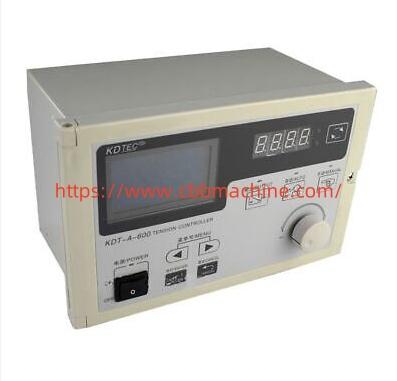In modern web-handling and roll-to-roll processing systems, the Tension Controller serves as an essential component that ensures consistent material flow, stability, and production quality across multiple industries. It plays a critical role in operations such as printing, laminating, slitting, and coating, where uneven material tension can lead to costly waste or machine downtime.
Maintaining proper tension is not just a mechanical task—it's a precision balance between movement, torque, and resistance. Every roll of material, whether paper, film, foil, or textile, behaves differently under load. The objective is to maintain a uniform tension level that prevents stretching, wrinkling, or breaking while maximizing productivity and minimizing defects.
In many modern factories, this balance is achieved through a combination of sensors, brakes, and electronic control systems that monitor and adjust force in real time. The controller continuously measures variables such as roll diameter, speed, and line position to maintain equilibrium. As the roll diameter decreases during unwinding, for example, the system automatically compensates for the change in torque required to sustain steady movement.
From a production standpoint, effective tension regulation can make a significant difference in output quality and operational efficiency. It allows for smoother transitions between machine stages, reduces misalignment, and supports consistent printing or coating thickness. Operators benefit from greater control over material handling while minimizing manual adjustments, which leads to fewer stoppages and enhanced throughput.
Another key advantage of modern electronic control systems is their ability to integrate seamlessly with other automation components. Advanced models can communicate with PLCs, servo drives, and web guides, providing precise digital feedback and coordinated adjustments across the entire production line. This synchronization not only boosts efficiency but also ensures traceable, repeatable results that meet strict industry standards.
Durability and adaptability are also central to equipment design. Controllers built with industrial-grade materials and intelligent circuitry can handle wide operating ranges while resisting interference or signal drift. Manufacturers often customize their systems for specific materials and production conditions, offering tailored solutions for complex processing needs.
When selecting control solutions, factors such as web width, tension range, line speed, and environmental conditions must all be evaluated. The ideal setup should offer both stability and responsiveness, supporting long-term reliability while remaining easy to maintain and calibrate. For businesses striving to improve consistency and minimize waste, investing in precise control technology becomes an essential step toward higher efficiency and product quality.
To learn more about advanced control systems and their industrial benefits, visit https://www.cbbmachine.com/news/industry-news/tension-controller-types-importance-applications-and-more.html.



